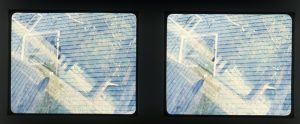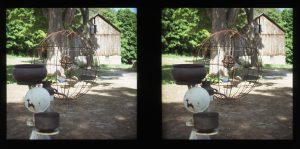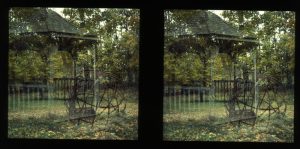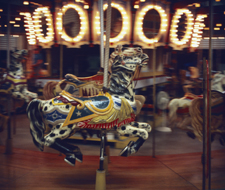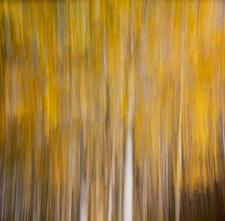I continue to experiment with multiple exposures. I had some failed attempts at indoor shots; somewhere my math went horribly wrong! I will continue to work on the math and measurements and make more attempts at indoor multiple exposures.
This first image I have included, titled “Angles”, is a look at shooting not only multiple exposures, but a variety of camera angles. I was interested to try and create a combination of vertical and horizontal lines among obviously diagonally skewed lines. I was also interested in the skewed lines being confused further by clearly being objects that should NOT be skewed. I plan to do more experimenting with this angular approach to multiple exposures. This is from a recent set of experiments. Five exposures on my Sputnik, handheld, with Fuji Velvia 100.
“Angles”
The next image is titled “Global Focus 3”. This variation of an image posted in a previous pass of the folio utilizes a slightly different alignment of the multiple shots. This variation is presented as it solves some of the issues commented on about the original version, while having other issues that worked better in the earlier version Global Focus presented a few years back. Thus is the nature of experimentation! I am a musician who has found experimentation to be a primary element of my 40+ year career of music making. This is just an extension of that reality. Two exposures on my Sputnik with Fuji Velvia 100.
“Global Focus 3”
Metal sculpture by Canadian sculptor Roy Hickling.
The third image I have included is “The Incursion”. This is also an earlier shot where I attempted to carefully place an object in a specific part of another object using a quadruple exposure. It is close to what I had hoped for, but size, perspective, alignment and exposure is a massive set of variables to deal with! Same sort of challenges as found in “Angles” above. Three exposures on my Sputnik with Fuji Velvia 100.
“The Incursion”
Metal sculpture by Canadian sculptor Roy Hickling.
Thanks to Steve Lederman for scanning these images for me!
Steve also developed some of the film for me in his home-basement-lab and used his superior skills to aid in some of the mounting.
